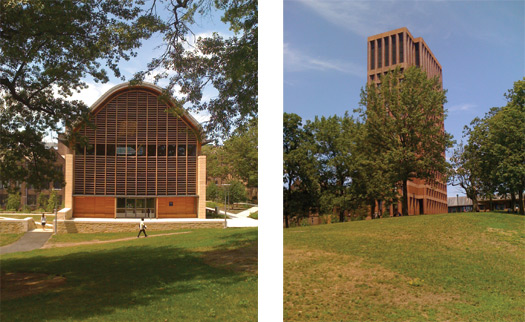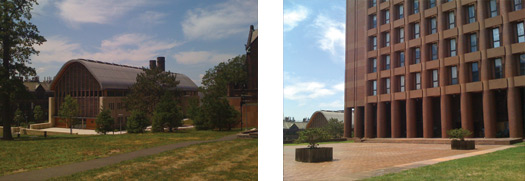
I don't think Philip Johnson would much care for Croon Hall, the new and very green building for Yale's school of forestry and environmental sciences. Johnson scoffed at what he called "do-gooder" architecture, design with more concern for functional or social problems than aesthetics.
Croon is most assuredly a building driven by its ecological program. Johnson liked to be wowed, and Croon isn't really a wow building unless the LEED rating system gets your blood going. The entry could not be less monumental: open the front door and you're in a long, dim hallway with low ceilings. It only opens up as you ascend its stairwell, which delivers you to a brightly lit space with a woody, Swiss-chalet type feel. The air is a bit still and perhaps a degree or two warmer than optimal — at least on a hot summer day. Not the kind of place to draw tears of euphoria. It's nice. Croon naturally draws comparison to Johnson's own Kline Biology Tower, which sits just above it on a bluff over the Yale campus. (Croon's louvered windows, unfortunately, block any view of it.)
While both buildings have distinct phallic overtones (Kroon especially), the Johnson building is by far the more verile of the two, a commanding brick-clad slab rising above the trees. If it's slightly butch, it is by no means insensitive; Johnson set it before a broad, comfortable plaza enclosed by a canopied pergola, where students and faculty can gather at picnic tables. As Vincent Scully has noted, it is set off-axis from Hillhouse Avenue below, so that it is not an overbearing presence above that historic street. A work of "do-gooder" design, perhaps, but one made on Johnson's terms.

